Selected News and Media Coverage
2019.04.11 Dr. Tao Selected for U.S. METAvivor Award & Department Grant

This has been a busy funding month for Dr. Wei Tao, as he received two grants for his work! Dr. Tao was selected for the U.S. METAvivor Early Career Investigator Award for his project entitled “Multi-Staged Delivery System Overcoming the Physiological Barriers for Metastatic Breast Cancer (MBC) Therapy.” The METAvivor Foundation exclusively funds MBC research for investigators who demonstrate promise in developing therapies and treatments for patients with stage 4 breast cancer.
Dr. Tao has also received the Department of Anesthesia Basic Scientist Grant for his project “In Situ Sprayed Near-Infrared-Responsive, Pain Relief Gel for Accelerated Wound Healing in Diabetes.” Congratulations Dr. Tao!
2019.04.11 Dr. Farokhzad Inducted Into the National Academy of Inventors
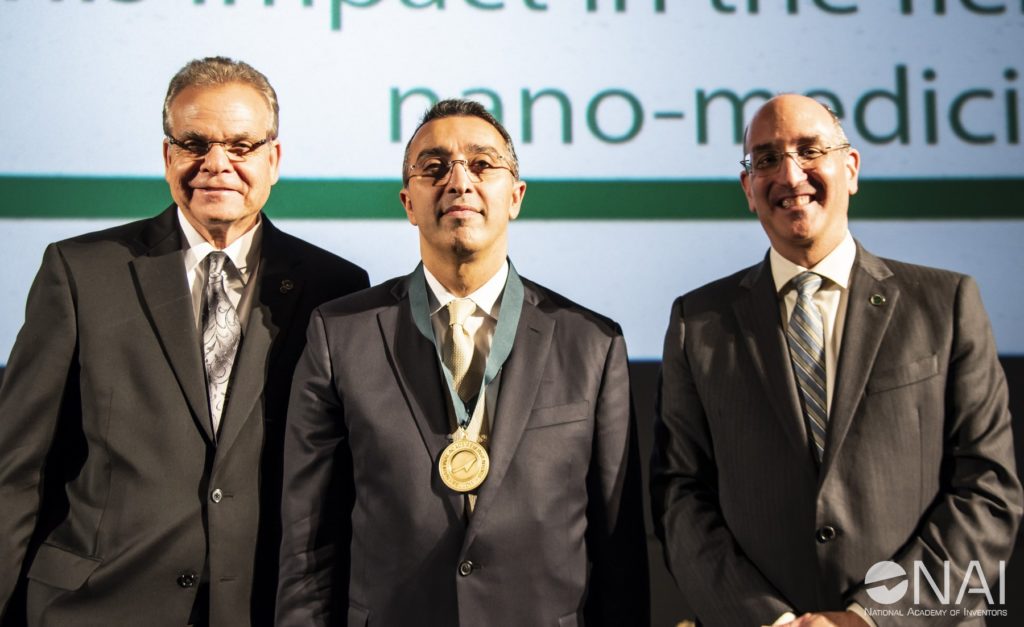
This year, Dr. Farokhzad was named a fellow of the National Academy of Inventors (NAI) for his work in nanotechnologies for medical applications. The NAI is an organization with over 1,060 individual inventors. It was founded to recognize inventors and make their work more visible across many academic and technological fields. Dr. Farokhzad has published over 175 papers and holds more than 200 issued or pending patents.
Congratulations on your induction to the NAI, Dr. Farokhzad!
2018.03.19 Warm Congratulations to Dr. Jinjun Shi, Dr. Wei Tao, and Ms. Gha Young Lee!

Congratulations are in order for three of our lab members as they celebrate new promotions and fellowships this month.
Dr. Jinjun Shi has been promoted to Associate Professor of Anesthesia at Harvard Medical School as he continues his PI role within the Center for Nanomedicine at Brigham & Women’s. Dr. Shi has worked closely with Dr. Farokhzad for years and will certainly continue to produce significant advances in biomaterials and nanotechnology!
Dr. Wei Tao is also celebrating a promotion this month. Dr. Tao has been promoted to Instructor in Anesthesia at Harvard Medical. He will take on this new role as he continues to research theranostic nanomaterials and polymeric nanoparticles for biomedical applications.
Gha Young Lee, a longtime member of the Farokhzad Lab, has been awarded the Herchel Smith fellowship from Harvard to continue her undergraduate research. As a Herchel Smith Undergraduate Science Research Fellow, Gha Young will continue her project in immunologic tolerance.
Best wishes to all! We look forward to the accomplishments you will achieve with your new opportunities.
2016.05.07 Dr. Farokhzad Receives 2016 Ellis Island Medal of Honor
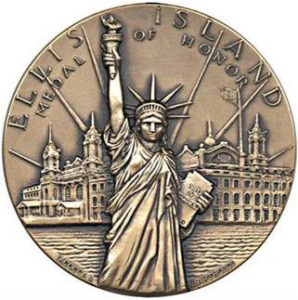
The Ellis Island Medals of Honor are awarded to individuals who have made it their mission to share their knowledge, courage, compassion and talents while maintaining the traditions of their ethnic heritage. Since the award was first given in 1986, the medal has been recognized by Congress as one of the United States’s most prestigious awards. The award is presented during a ceremony on Ellis Island. Farokhzad currently serves as the director of the Laboratory of Nanomedicine and Biomaterials, where his research is focused on the development of therapeutic nanoparticle technology. The nanotechnologies that Farokhzad has helped pioneer have formed the basis for a new class of targeted nanoparticles for treatment of major human diseases like cancer, diabetes and cardiovascular disease. Additionally, his research has also been used in the formation of a new class of nanoparticle vaccines and a class of integrative combination nanomedicines that help to treat cancers, inflammation and infectious diseases.
[Learn more from the BWH] [Learn more from the PAAIA]
2015.07.12
Dr. Farokhzad Named One of The Worldview 100 Most Influential People in Biotech by Scientific American
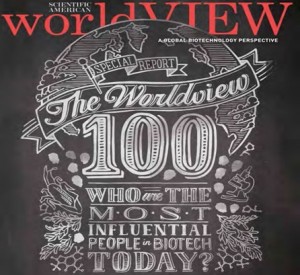
The recent Worldview feature by Scientific American features a list of 100 Biotech leaders and recognizes leading researchers for their fundamental insights into biological processes, as well as those who develop these insights to create biology-based goods and services that are the essence of biotechnology. The honorees also include entrepreneurs and business experts who have been highly influential in enabling biotechnology to flourish, in addition to key media figures who have helped spread this message to the wider community. Dr. Farokhzad was named an honoree on this list for his work on developing and commercializing nanoparticle based drug delivery systems for the treatment of a range of diseases.
[Read more from Scientific American]
2015.02.19
Keeping Atherosclerosis in-check with Novel Targeted Inflammation-Resolving Nanomedicines
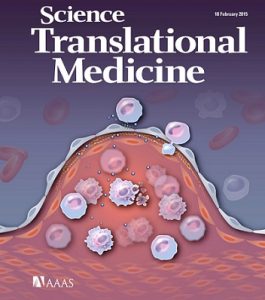
Nanometer-sized “drones” that deliver a special type of healing molecule to fat deposits in arteries could become a new way to prevent heart attacks caused by atherosclerosis, according to a study in pre-clinical models by the Omid Farokhzad’s lab at Brigham and Women’s Hospital (BWH) and Ira Tabas’s lab at Columbia University Medical Center. These findings were published in the February 18th online issue of Science Translational Medicine. Although current treatments have reduced the number of deaths from atherosclerosis-related disease, atherosclerosis remains a dangerous health problem: Atherosclerosis of the coronary arteries is the #1 killer of women and men in the U.S., resulting in one out of every four deaths. In the study, targeted biodegradable nano ‘drones’ that delivered a special type of drug that promotes healing (‘resolution’) successfully restructured atherosclerotic plaques in mice to make them more stable. This remodeling of the plaque environment would be predicted in humans to block plaque rupture and thrombosis and thereby prevent heart attacks and strokes. “This is the first example of a targeted nanoparticle technology that reduces atherosclerosis in an animal model,” said co-senior author Omid Farokhzad, MD, associate professor and director of the Laboratory of Nanomedicine and Biomaterials at BWH and Harvard Medical School (HMS). “Years of research and collaboration have culminated in our ability to use nanotechnology to resolve inflammation, remodel and stabilize plaques in a model of advanced atherosclerosis.” In this study, targeted nanomedicines made from polymeric building blocks that are utilized in numerous FDA approved products to date, were nanoengineered to carry an inflammation resolving drug payload in the form of a biomimetic peptide called Ac2-26. Furthermore, this peptide was derived from one of the body’s own natural inflammation-resolving proteins called Annexin A1. The way the nanomedicines were designed enabled this biological therapeutic to be released at the target site, the atherosclerotic plaque, in a controlled manner.
[Read more from bizjournals] [Read more from HMS] [Read more from The Telegraph]
2014.12.03
The International Institute of New England Honored Dr. Omid Farokhzad with the 34th Golden Door Award

The International Institute of New England (IINE) honored Dr. Omid Farokhzad with the International Institute of New England (IINE) honored Dr. Omid Farokhzad with the 34th Golden Door Award at its annual award ceremony, which took place at the John Joseph Moakley United States Courthouse in Boston on Dec 3rd. Dr. Farokhzad accepted the Golden Door Award at this signature fundraising event for the Institute. The award which was presented by Carolyn Benedict-Drew, President and CEO of IINE recognizes foreign-born USA naturalized citizens who have significantly contributed to society and the economy; “We were honored to present the award to Omid, a true role model and overall inspiring man who has done so much to help our society. He is a sincere professional and the most deserving person for the award, Omid is truly a champion of the American Dream and we were pleased that we could honor him while bringing hundreds of people together to support the many outstanding programs offered by the IINE.”
[Learn more from the IINE]
2014.11.08
National Institute of Biomedical Imaging and Bioengineering Symposium
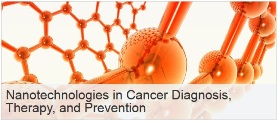
Dr. Farokhzad gives a talk at the National Institute of Biomedical Imaging and Bioengineering (NIBIB) for the second Edward C. Nagy New Investigator Symposium Award Ceremony on July 30, 2014 in memory and honor of Edward C. Nagy, who was a key figure in the creation of the NIBIB. The NIBIB is focused on leading the development and acceleration of biomedical technologies with the view of integrating physical sciences and engineering with life sciences. The Laboratory of Nanomedicine and Biomaterials is currently conducting research on the development of targeted orally administered controlled-release polymeric nanoparticles for insulin delivery funded by the NIBIB. Dr. Farokhzad previously received a K08 career award from NIBIB in 2005 to develop targeted nanoparticles, which in part formed the foundation for the clinical translation of the 1st targeted and controlled release nanoparticles for cancer therapy in 2011.
[Read more from NIBIB]
2014.08.07
Nanomedicines for Drug Delivery to Myeloma and Bone Microenvironment
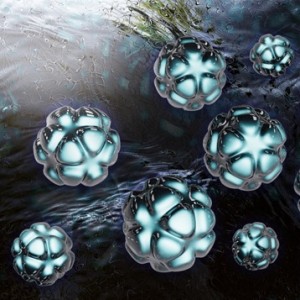
A collaboration between Harvard Medical School researchers at Brigham and Women’s Hospital and Dana-Farber Cancer Institute has utilized nanomedicine technologies to develop a drug-delivery system that can precisely target and attack cancer cells in the bone, as well as increase bone strength and volume to prevent bone cancer progression. Bone is a favorable microenvironment for tumor growth and a frequent destination for metastatic cancer cells. Targeting cancers within the bone marrow remains a crucial oncologic challenge due to issues of drug availability and microenvironment-induced resistance. In this study, engineered bone-homing polymeric nanoparticles for spatiotemporally controlled delivery of therapeutics to bone were developed, which diminish off-target effects and increase local drug concentrations. These findings were published online in PNAS (June 30th, 2014 edition) and suggest that bone-targeted nanoparticle anti-cancer therapies offer a novel way to deliver a concentrated amount of drug in a controlled and target-specific manner to prevent tumor progression in multiple myeloma.
[Read more from HMS] [Read more from CRUK]
2013.27.11
Transepithelial Transport of Fc-Targeted Nanoparticles by the Neonatal Fc Receptor for Oral Delivery
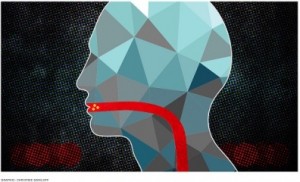
A new study published by Dr. Farokhzad and colleagues has demonstrated for the first time, the oral delivery of insulin loaded nanoparticles across the transepithelial layer in the gut, using the neonatal Fc receptor (FcRn). In a paper published in the Nov. 27 online edition of Science Translational Medicine, the team showed the development and testing of biodegradable controlled release polymeric nanoparticles that have an anti-body fragment on their surface, which targets the FcRn found on the surfaces of cells lining the intestines. This receptor mediates IgG antibody transport across epithelial barriers and was originally discovered as the receptor in the neonatal intestine that transports IgG in breast milk from the mother to her baby. Interestingly, this receptor is expressed into adulthood at similar levels to fetal expression and is an excellent targeting strategy — allowing the nanoparticles to get actively transported through the intestinal walls and enter the bloodstream. The team showed that nanoparticles coated with Fc proteins reached the bloodstream 11-fold more efficiently than equivalent nanoparticles without the coating. Furthermore, the amount of insulin delivered was large enough to lower the mice’s blood sugar levels. This type of drug delivery could be especially useful in developing new treatments for a range of diseases where regular medication is required. The lead authors of the study are Dr. Eric Pridgen (former MIT graduate now studying for his medical degree at Stanford University) and Dr. Frank Alexis (former BWH postdoctoral fellow now Assistant Professor at Clemenson University).
[Read more from BWH] [Read more from MIT news office] [Read more from The World Street Journal]
2013.01.11
Dr. Farokhzad is awarded a 2013-2015 Movember-PCF Challenge Award for the project entitled: MYC RNAi Nanoparticles for Metastatic Prostate Cancer Treatment.
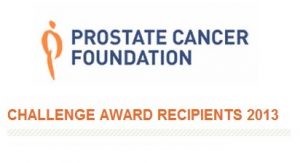
Dr. Omid Farokhzad and collaborators were recently awarded a PCF Challenge Award ($1 million). In this project for which Dr. Omid Farokhzad is the Primary Investigator, the team will develop innovative self-assembling nanoparticles for the treatment of metastatic prostate cancer. These self-assembling nanoparticles will be designed to carry an internal payload of siRNAs, or small interfering RNAs that silence the expression and activity of specific target genes. The target of interest here is MYC. The MYC gene and its protein are commonly overexpressed in prostate cancer, both in the early stages of the disease, as well as during its progression and metastatic spread. The MYC gene is often aberrantly activated in many cancers and has been implicated in prostate cancer progression to therapy resistance. Therefore MYC is an excellent therapeutic target. However, MYC has traditionally been considered “undruggable” and no effective inhibitors have been identified against this driver of prostate cancer. Dr. Omid Farokhzad and collaborators will employ a unique nanoparticle strategy to target MYC and inhibit its downstream signaling activity on other genes. The aim of these nanoparticles will be to eradicate early invasive carcinoma, advanced localized cancer, and metastatic disease in a first-in-field, genetically engineered mouse model of metastatic disease that expresses MYC. The successful completion of this project will generate a nanoparticle candidate ready for preclinical and clinical development.
[Read more from the PCF]
2013.01.11
Dr. Farokhzad is awarded the 2013 RUSNANOPRIZE for developing nanoparticle technologies for medical applications

Omid Farokhzad and Robert Langer were jointly awarded this year’s RUSNANOPRIZE for their work on clinically translatable nanomedicines. The prize is awarded to researchers and scientists who have produced outstanding scientific or technological discoveries in the field of nanotechnology, and to the company involved in industrializing these technologies for product development and human impact. The prize is 3 million rubles ($94 000) and has been awarded since 2009 to 8 laureates who have laid the foundations for new nanotechnologies, and is one of the largest nanotechnology prizes worldwide.
[Read more from Rusnano]
2013.09.10
Dr. Farokhzad and his research team are featured in the Harvard Gazette

Alvin Powell writes: “Nanotherapy visionary Omid Farokhzad is helping bring to reality nanoparticle-based vaccines that can take the joy out of smoking, reverse allergies, and more. Omid Farokhzad’s vision of medicine’s future sounds a lot like science fiction. He sees medicine scaled down, with vanishingly small nanoparticles playing a big role, delivering drug doses measured in molecules directly to cancerous tumors. He sees “theranostic” particles that not only deliver nanotherapy, but also beam back diagnostic images of changing tumor cells. He sees “smart” nanoparticles that release tiny doses of drugs, such as insulin, in response to body conditions, like changing blood sugar levels…”
[Read more from Harvard University’s Harvard Gazette here]
2013.16.08
Dr. Farokhzad named a 2013 Health Care Champion by the Boston Business Journal
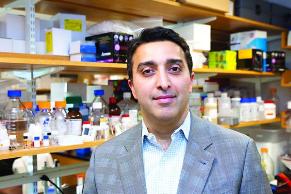
Keith Regan writes: “Harvard researcher finds lab as rewarding as startup hits. Dr. Omid Farokhzad’s research is the foundation of three biotechnology startups. In the nine years since he established the Laboratory of Nanomedicine and Biomaterials at Harvard Medical School, the research of Dr. Omid Farokhzad has formed the foundation of three biotechnology startup. Those firms — BIND Therapeutics in Cambridge and Selecta Bioscience and Blend Therapeutics in Watertown — now employ 120 people and have collectively raised $210 million in venture backing and signed long-term partnerships with pharmaceutical companies worth $2 billion. All three firms are exploring ways to commercialize the advances in nanomaterials and nanoscience made in Farokhzad’s lab at Harvard Medical School. And while he remains a close adviser to the leadership of those companies, Farokhzad has chosen to continue to focus on the science. “I have chosen to be an academic and to run an academic lab,” he said. “I’m delighted those companies are being led by experienced executives and are viable firms employing people and more importantly that they have brought treatments into clinical trials…”
[Read more from the Boston Business Journal]
2013.19.05
Dr. Farokhzad Named One of the Top Innovators in Massachusetts By the Boston Globe
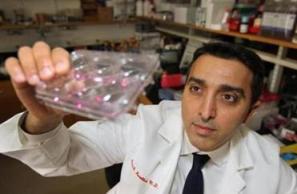
“Big thinker Omid Farokhzad is thinking small. How small? “The typical nanotechnology we develop is on the order of 100 nanometers in size, enough to put a thousand side by side on the cross-section of a hair,” said Farokhzad, 44, a biotech pioneer who believes he has found the silver bullet in medicine — targeted nanoparticles that encapsulate drugs and deliver their precious cargo directly to diseased cells. His mentor, famed MIT scientist Robert Langer, counts Farokhzad among a new breed of visionary physician-scientists who translate academic innovations into vital biotech start-ups. Farokhzad holds 65 patents that helped create three companies developing breakthrough therapeutics. These start-ups have raised more than $200 million and employ 100 scientists, bringing nanoparticle vaccines and targeted anti-cancer drugs to the market”
[Read more from the Boston Globe]
2013.18.03
Clearing Up Inflammation with Proresolving Nanomedicines
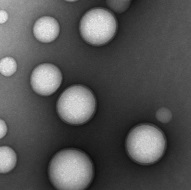
“A new study published in PNAS by researchers at Brigham and Women’s Hospital (BWH), Columbia University Medical Center, Icahn school of Medicine at Mount Sinai, and Massachusetts Institute of Technology presents the development of tiny nanomedicines in the sub 100 nm range (100,000 times smaller than the diameter of a human hair strand) that are capable of encapsulating and releasing an inflammation-resolving peptide drug. The authors showed that these nanoparticles are potent pro-resolving nanomedicines, capable of selectively homing to sites of tissue injury in mice, and releasing their therapeutic payload in a controlled manner over time. Uniquely, these nanoparticles are designed to target the extracellular microenvironment of inflamed tissues”…
[Read more from Sciencedaily] [Read more from Nanotech-now] [Read more on Bio-Medicine]
2012.21.11
Dr. Farokhzad and Dr. Langer contribute to The Economist science and technology feature
“In the film “Fantastic Voyage”, a microscopic submarine travels through a human body. That sort of adventure is not on the horizon in 2013, but nanomedicine—medicine on an atomic and molecular scale—is growing up fast. In the coming year not only will a steady pace of innovation and discoveries be maintained, but the world will also begin to see the emergence of more effective therapeutic, diagnostic and imaging methods…”
[Read more of the “Small is Fantastic article” here…]
2012.18.10
The Future of Cancer Treatment: First-of-its-kind Self-Assembled Nanoparticle for Targeted and Triggered Thermo-Chemotherapy
“Excitement around the potential for targeted nanoparticles (NPs) that can be controlled by stimulus outside of the body for cancer therapy has been growing over the past few years. More specifically, there has been considerable attention around near-infrared (NIR) light as an ideal method to stimulate nanoparticles from outside the body. NIR is minimally absorbed by skin and tissue, has the ability to penetrate deep tissue in a noninvasive way and the energy from NIR light can be converted to heat by gold nanomaterials for effective thermal ablation of diseased tissue.”
[Read more…]
2012.14.09
Dr Farokhzad is interviewed by Science Career Magazine as part of the: “Finding Balance: The Professor/Entrepreneur” career advice article

“Omid Farokhzad has been involved with three startups and holds 60 patents, and still manages a prolific laboratory…”
[Read more…]
2012.17.04
Targeted Nanoparticle Tested in Patients with Cancer
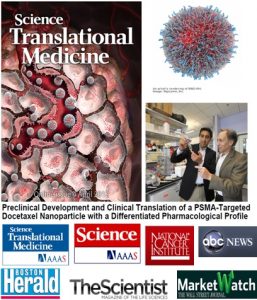
Researchers from Brigham and Women’s Hospital, Harvard Medical School, Massachusetts Institute of Technology (MIT), BIND Biosciences, Inc., and colleagues published the development of a targeted polymeric nanoparticle, called BIND-014, in the April 4th issue of Science Translational Medicine. This work describes the first human trial to test a targeted nanoparticle capable of controlling a drug’s release. These nanoparticles have been optimized to release the chemotherapy drug docetaxel in a controlled manner, in order to deliver a higher and more sustained dose of the drug directly to tumors. This approach allows for up to 10 times more drug to reach tumors resulting in: (i) anti-tumor efficacy at relatively low administerd doses of the drug, (ii) anit-tumor efficacy in tumor types that the drug has shown minimal activity in, and (iii) a reduction in drug toxicity and off-target effects.
[Read more from the National Cancer Institute][Read more from the Science Magazine] [Read more from Brigham Women’s Hospital] [Read the press release from Boston Herald] [Read the press release from MIT] [Read a patient’s interview] [Read more on marketwatch] [Read more on ABC news]
2012.22.02
Dr Farokhzad is elected to the College of the Fellows of the American Institute of Medical and Biological Engineering (AIMBE)

Dr Farokhzad’s efforts “for pioneering nanotechnology research in the field of cancer therapy, all the way from conception to human clinical testing” was recognized at the AIMBE’s 21st Annual Event in Washington, DC in February 2012. The College of Fellows comprises remarkable bioengineers in academia, industry and government and AIMBE College Fellows represent the top 2% of the medical and biological engineering community.
[Read more from Brigham and Women’s Hospital…]
2012.01.03
Getting Cancer Cells to Swallow Poison
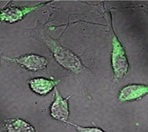
A drug delivery system that is able to effectively deliver a large amount of chemotherapeutic drugs to prostate cancer cells has been developed by Omid Farokhzad and his team. This strategy allows for the selection of ligands (molecules that bind to the cell surface) that specifically target prostate cancer cells. In addition to binding to cancer cells, these specially selected ligands have the unique ability to distinguish between cancer and non-cancer cells and are designed to be swallowed by any desired types of cancer cells, even if their cancer markers are unknown.
[Read more from Brigham and Women’s Hosptial…] [Read more from Chemical Engineering News…] [Read more from ScienceDaily…]
2011.21.11
Selecta Biosciences Initiates Phase 1 Clinical Study of SEL-068, a First-in-class Synthetic Nicotine Vaccine for Smoking Cessation and Relapse Prevention
Selecta Biosciences which develops synthetic vaccines and immunotherapies, initiated a Phase 1 clinical trial to assess the safety, tolerability and pharmacodynamic profile of SEL-068, a nicotine vaccine candidate for smoking cessation and relapse prevention. SEL-068 is the first product candidate to enter clinical evaluation from Selecta’s proprietary Synthetic Vaccine Particle (SVPTM) Platform, and has the potential to become the first nanoparticle vaccine that is synthetically engineered, distinct from conventional biological vaccine manufacturing processes.
[Read more from The Boston Globe…] [Read the press release from Selecta Biosciences]
2011.01.07
BIND Biosciences Initiates Phase 1 Clinical Study Of BIND-014, A First-In-Class Targeted Nanoparticle Therapeutic For Cancer
BIND Biosciences announced today that it has initiated a Phase 1 clinical trial to assess the safety, tolerability and pharmacokinetic profile of BIND-014 in cancer patients. BIND-014, the first product candidate to enter clinical evaluation from BIND’s broad proprietary Medicinal Nanoengineering platform, is a targeted polymeric nanoparticle containing the cytotoxic agent, docetaxel.
[Read more from Medical News Today…] [Read the press release from Bind Biosciences]
2010.10.05
New Nanoparticles Could Improve Cancer Treatment

Research and the development of new cancer treatments, as a result of advances in DNA sequencing, have shown that combination drug therapy can be more effective than a single drug when treating some types of cancers. However, the effective administration of more than one drug can be challenging due to difficulties reaching the cancer cells with the appropriate amount of each drug. Developments in nanotechnology have begun to address this issue with recent research illustrating how nanoparticles are able to carry drugs and target cancer cells specifically.
[Read more from the press release…] [Read the press release from MIT]
2010.01.18
New Nanoparticles Target Cardiovascular Disease
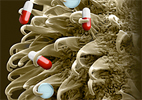
Researchers at Brigham and Women’s Hospital and MIT have built targeted nanoparticles that can cling to artery walls and slowly release medicine, an advance that potentially provides an alternative to drug-releasing stents in some patients with cardiovascular disease. This work is described in a paper led by Juliana Chan, Professor Robert Langer at MIT and Dr. Farokhzad was published in the Jan. 18 issue of the Proceedings of the National Academy of Sciences. [Read more from the press release…]
2009.11.04
Dr. Farokhzad Receives All-Star Distinguished Achievement Award

Dr. Farokhzad was honored as one of fifteen receipients across all industries of “All Star Distinguished Achievement Award”, from the Mass High Tech.
” …Dr. Farokhzad has made a large impact on medical science by thinking small. He works on an unimaginably tiny scale, developing nanoparticles that enable more targeted and effective treatments for delivering drugs directly to diseased tissues. An associate professor at the Harvard Medical School, he is a co-founder and director of Bind Biosciences Inc. and a co-founder and vice chairman of Selecta Biosciences Inc….”
[Read More…]
2009.08.31

Homing In On Cancer
Nanoparticles carrying chemotherapy drugs and decorated with special binding agents invade cancer cells, where the nanoparticles unleash the drugs within, effectively destroying the cancer cells.
[Read the full report from BRINK]
2007.05.10
Magic Nano-Bullets

Advances in nanotechnology could make drug delivery far more accurate and effective. Submicroscopic techniques that could kill cancer or mend weak hearts will only be used if they target the right cells and leave others unharmed. After years of development, researchers will soon begin clinical trials of “magic bullets” that employ nanotechnology to deliver drugs only where they are needed.
[Read the full report from worldVIEW]
2007.01.05
Forbes salutes Nanoparticle Chemotherapy
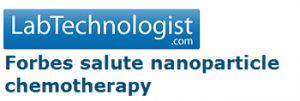
Forbes has highlighted the important role of nanotechnology in driving forward the pharmaceutical industry with three of their top five nanotech breakthroughs in 2006 having biological applications. Scientists at the Massachusetts Institute of Technology (MIT) and Harvard have designed nanoparticles that target cancer cells to deliver a localised dose of chemotherapy drugs.
[Read the full report from LabTechnologist]
2006.11.05
Cancer Smart Bomb

Nausea, fatigue, hair loss — chemotherapy can feel as destructive as the cancer it’s fighting. But as this ScienCentral News video reports, researchers now say there may be a way to reduce many of chemotherapy’s side effects and improve the precision of the treatment using a nanotechnological smart bomb.
[Read the full report from ScienCentral]
[Watch video report aired by ABC National Nightly News]
2006.04.11
Nanoparticles Annihilate Prostate Cancer

Fighting cancer is currently a messy war. Modern chemotherapies attack tumors with the equivalent of a machine gun approach: cover the area widely with deadly fire and hope to destroy the tumor with a minimum of collateral damage. Doctors have long sought a way to precisely target tumors with their chemical therapies. Now researchers may have found it in a nanoparticle laced with a cancer-combating drug.
[Read the full report from SCIENTIFIC AMERICAN]